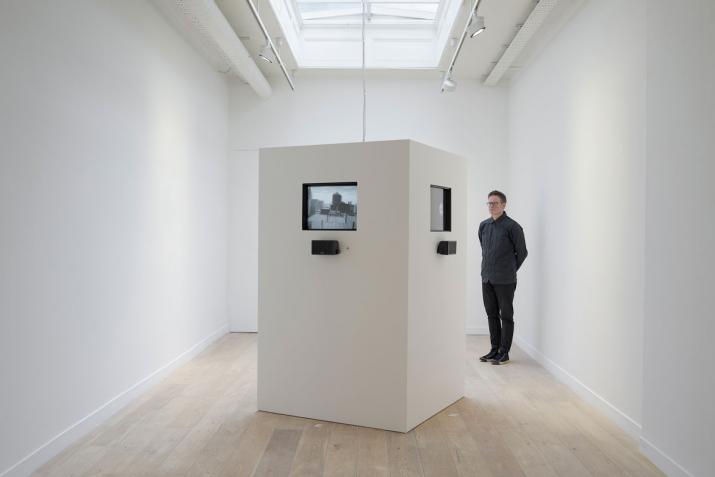
Nancy Holt: Points of View
This September Nancy Holt: Points of View launches at Parafin, London. The exhibition explores Nancy Holt’s fascination with language and systems of perception.
Nancy Holt, Points of View (detail) (1974)
Clocktower Gallery, New York
Four-monitor video installation, black-and-white, sound
Duration: 44 minutes
Video unit: 6 ft. x 4 ft. 6 in. x 4 ft. 6 in. (1.83 x 1.37 x 1.37 m)
Photograph: Gwenn Thomas
©Holt/Smithson Foundation, Licensed by VAGA at ARS, New York
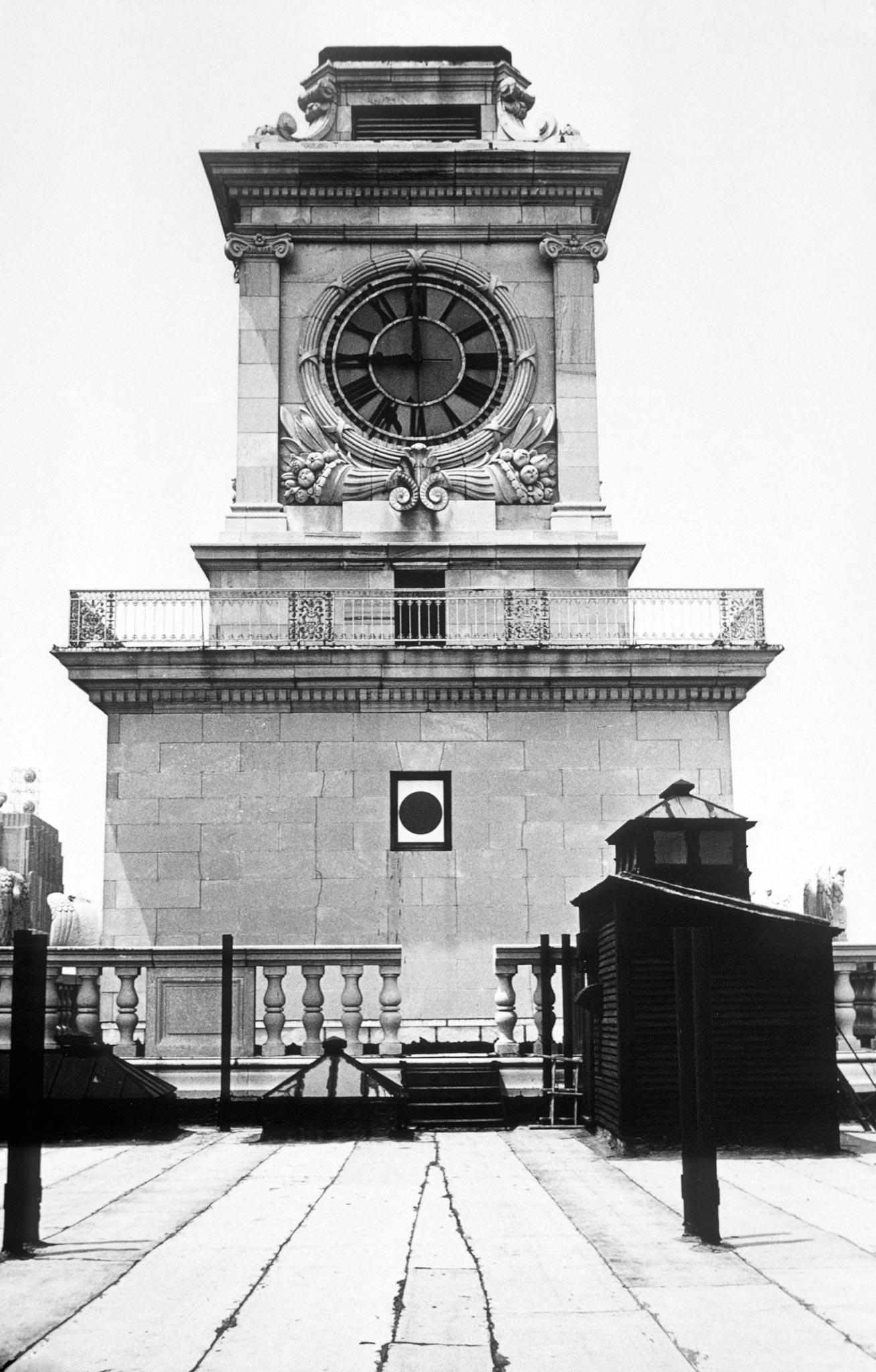
Nancy Holt, Points of View (detail) (1974)
Clocktower Gallery, New York
Four-monitor video installation, black-and-white, sound
Duration: 44 minutes
Video unit: 6 ft. x 4 ft. 6 in. x 4 ft. 6 in. (1.83 x 1.37 x 1.37 m)
Photograph: Gwenn Thomas
©Holt/Smithson Foundation, Licensed by VAGA at ARS, New York
Nancy Holt, Points of View (detail) (1974)
Clocktower Gallery, New York
Four-monitor video installation, black-and-white, sound
Duration: 44 minutes
Video unit: 6 ft. x 4 ft. 6 in. x 4 ft. 6 in. (1.83 x 1.37 x 1.37 m)
Photograph: Gwenn Thomas
©Holt/Smithson Foundation, Licensed by VAGA at ARS, New York
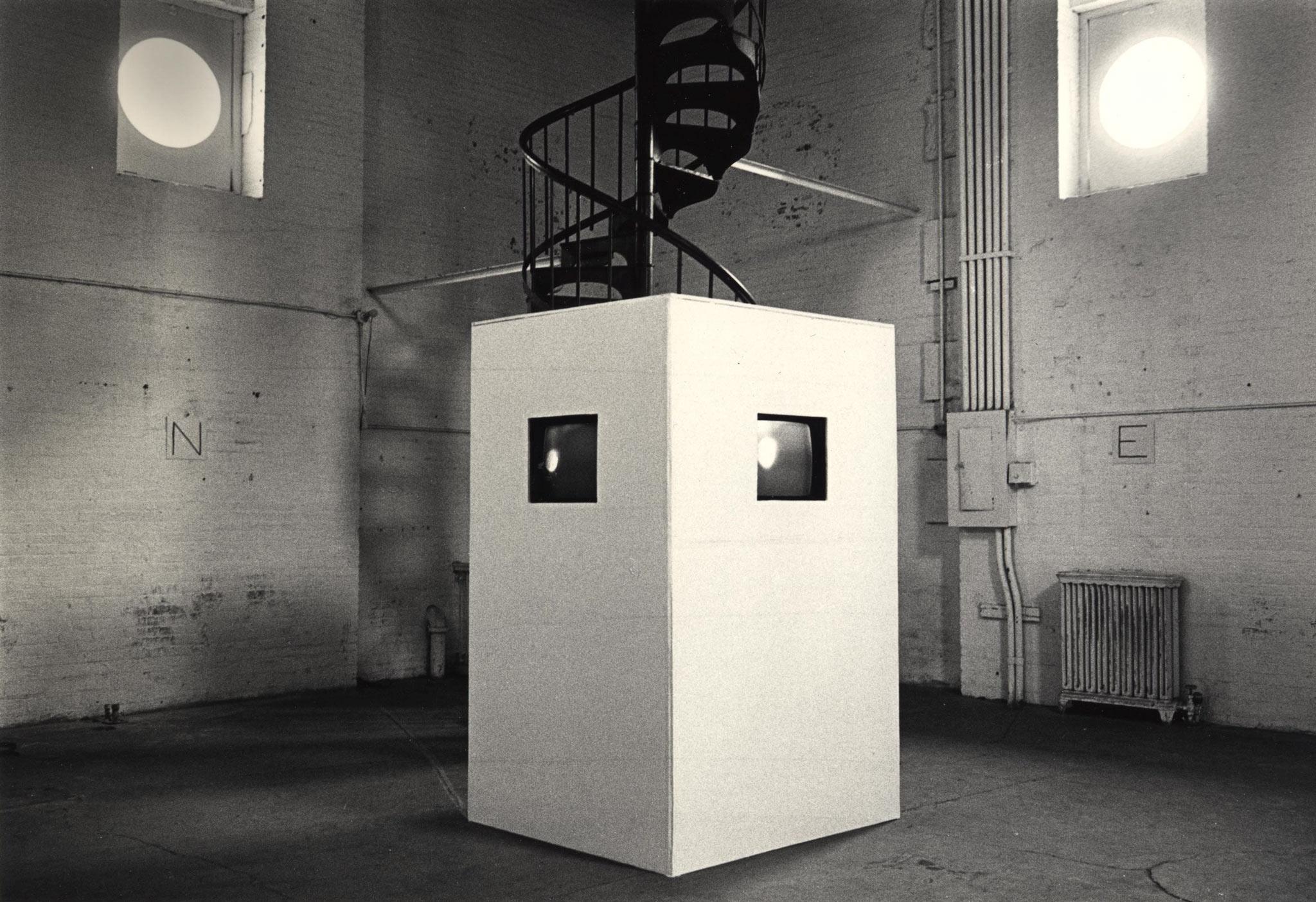
Nancy Holt, Points of View (detail) (1974)
Clocktower Gallery, New York
Four-monitor video installation, black-and-white, sound
Duration: 44 minutes
Video unit: 6 ft. x 4 ft. 6 in. x 4 ft. 6 in. (1.83 x 1.37 x 1.37 m)
Photograph: Gwenn Thomas
©Holt/Smithson Foundation, Licensed by VAGA at ARS, New York
Portrait of Nancy Holt taken on the steps up to the Clocktower Gallery, New York (1974)
Photograph: Gwenn Thomas
©Holt/Smithson Foundation, Licensed by VAGA at ARS, New York
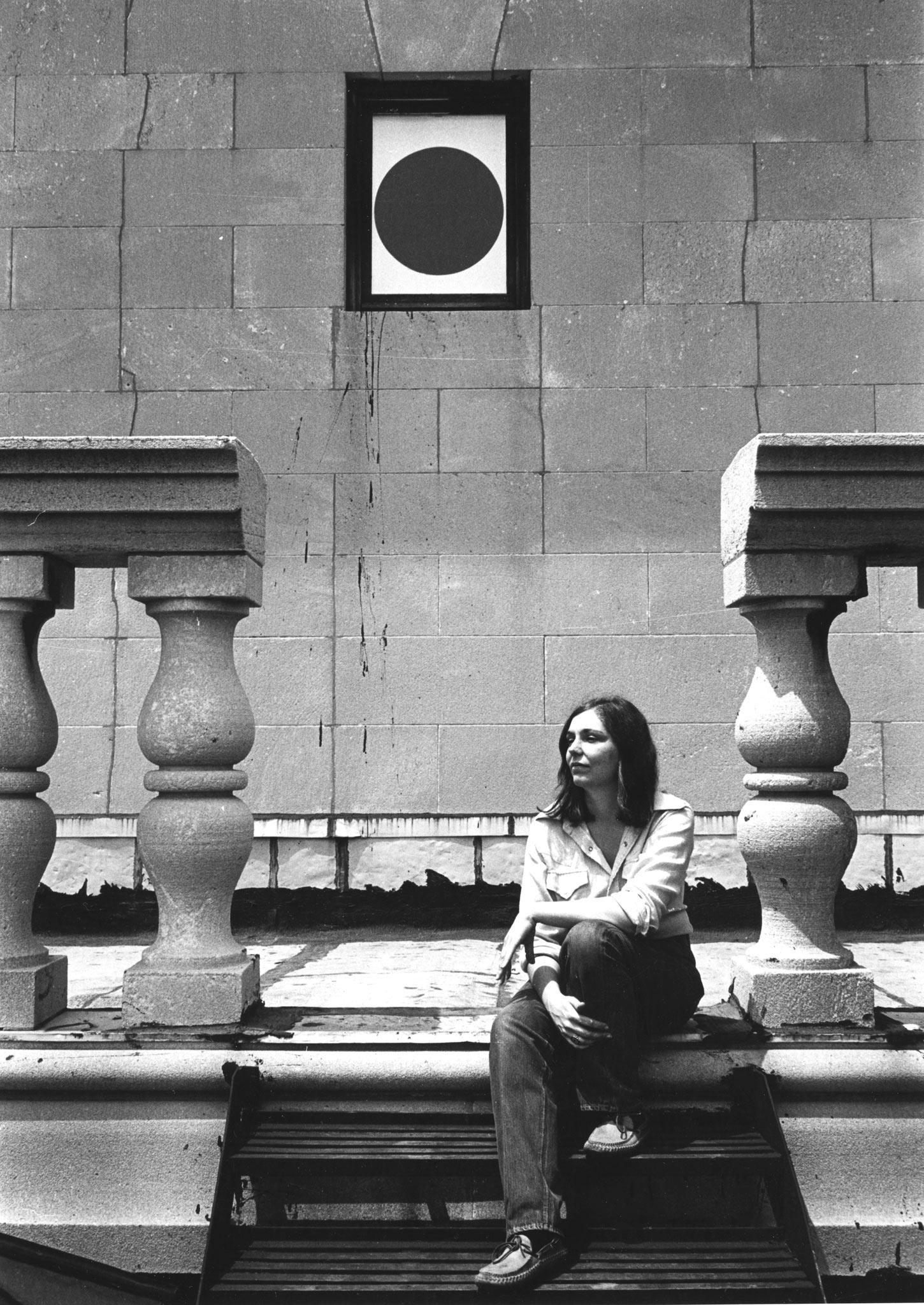
Portrait of Nancy Holt taken on the steps up to the Clocktower Gallery, New York (1974)
Photograph: Gwenn Thomas
©Holt/Smithson Foundation, Licensed by VAGA at ARS, New York
Nancy Holt, Points of View (still) (1974)
Clocktower Gallery, New York
Four-monitor video installation, black-and-white, sound
Duration: 44 minutes
Video unit: 6 ft. x 4 ft. 6 in. x 4 ft. 6 in. (1.83 x 1.37 x 1.37 m)
©Holt/Smithson Foundation, Licensed by VAGA at ARS, New York

Nancy Holt, Points of View (still) (1974)
Clocktower Gallery, New York
Four-monitor video installation, black-and-white, sound
Duration: 44 minutes
Video unit: 6 ft. x 4 ft. 6 in. x 4 ft. 6 in. (1.83 x 1.37 x 1.37 m)
©Holt/Smithson Foundation, Licensed by VAGA at ARS, New York
Nancy Holt, Points of View (still) (1974)
Clocktower Gallery, New York
Four-monitor video installation, black-and-white, sound
Duration: 44 minutes
Video unit: 6 ft. x 4 ft. 6 in. x 4 ft. 6 in. (1.83 x 1.37 x 1.37 m)
©Holt/Smithson Foundation, Licensed by VAGA at ARS, New York
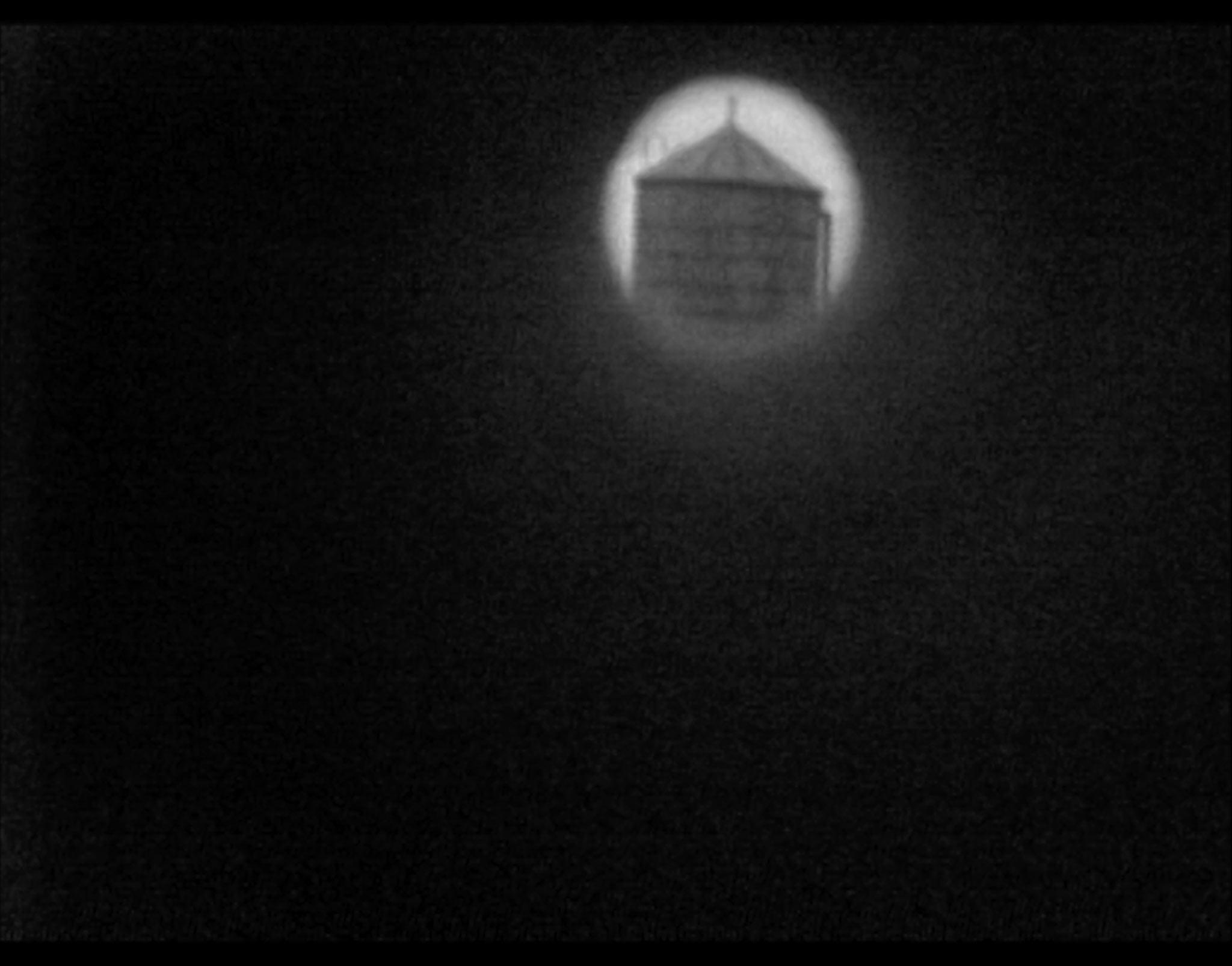
Nancy Holt, Points of View (still) (1974)
Clocktower Gallery, New York
Four-monitor video installation, black-and-white, sound
Duration: 44 minutes
Video unit: 6 ft. x 4 ft. 6 in. x 4 ft. 6 in. (1.83 x 1.37 x 1.37 m)
©Holt/Smithson Foundation, Licensed by VAGA at ARS, New York
Nancy Holt, Points of View (still) (1974)
Clocktower Gallery, New York
Four-monitor video installation, black-and-white, sound
Duration: 44 minutes
Video unit: 6 ft. x 4 ft. 6 in. x 4 ft. 6 in. (1.83 x 1.37 x 1.37 m)
©Holt/Smithson Foundation, Licensed by VAGA at ARS, New York

Nancy Holt, Points of View (still) (1974)
Clocktower Gallery, New York
Four-monitor video installation, black-and-white, sound
Duration: 44 minutes
Video unit: 6 ft. x 4 ft. 6 in. x 4 ft. 6 in. (1.83 x 1.37 x 1.37 m)
©Holt/Smithson Foundation, Licensed by VAGA at ARS, New York
Nancy Holt, Points of View (detail) (1974)
Clocktower Gallery, New York
Four-monitor video installation, black-and-white, sound
Duration: 44 minutes
Video unit: 6 ft. x 4 ft. 6 in. x 4 ft. 6 in. (1.83 x 1.37 x 1.37 m)
Photograph: Gwenn Thomas
©Holt/Smithson Foundation, Licensed by VAGA at ARS, New York
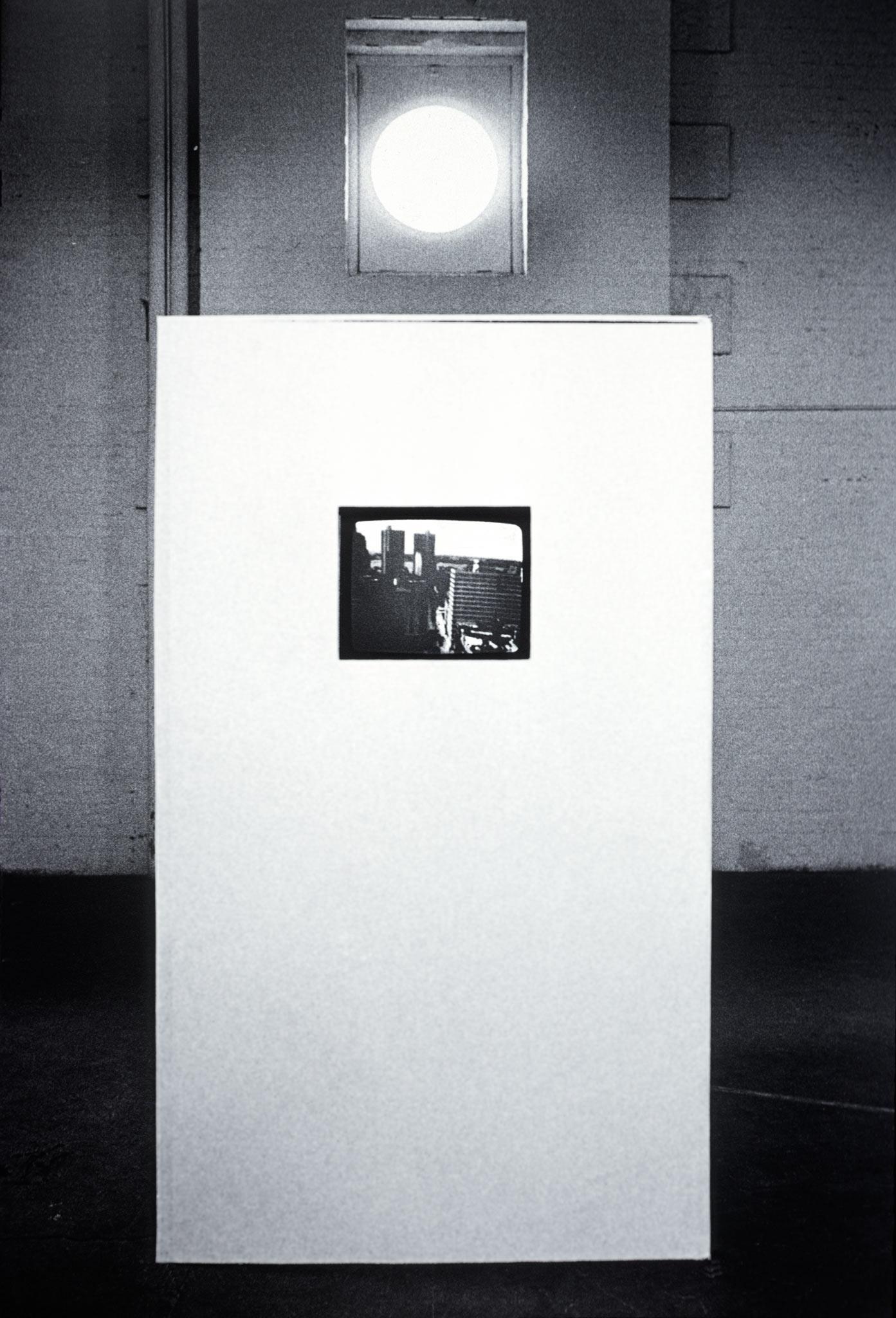
Nancy Holt, Points of View (detail) (1974)
Clocktower Gallery, New York
Four-monitor video installation, black-and-white, sound
Duration: 44 minutes
Video unit: 6 ft. x 4 ft. 6 in. x 4 ft. 6 in. (1.83 x 1.37 x 1.37 m)
Photograph: Gwenn Thomas
©Holt/Smithson Foundation, Licensed by VAGA at ARS, New York
In Points of View, an installation at the Clocktower Gallery, New York City, May 1974, four monitors were placed facing out N, E, S, W at eye level in the center of the room. They were enclosed in a white rectangular structure 61⁄2 x 41⁄2 x 41⁄2 ft. with monitor screens exposed at a height of 41⁄2 to 51⁄2 ft. This structure repeated the structure of the square room with its high walls and four windows N, E, S, W overhead. The windows themselves were made circular, causing an interaction between the circles of sunlight shining into the space and the circles of video light being emitted by the monitors.
Four tapes, previously shot from a walkway under each of the four windows through a static camera with a movable circular tube in front of the lens, were played back simultaneously on all four monitors, revealing passing circular glimpses of the world outside. Eight persons (two per tape) have a dialogue about what they are seeing on the screen in a sound-over track. The video installation unit thus became a repository of divergent interpretations of the world as it can be seen from the heights of the Clocktower through the video system (a vision not available in the room itself since the windows are above eye level). The view is quite vast; it includes lower and mid-Manhattan, the East and Hudson rivers, and parts of Brooklyn and New Jersey, as well as things closer in, such as flues, chimneys, and water towers.
Verification of video perceptions was possible by going through a door in the room out onto a walkway, which completely surrounded the outside of the Clocktower. So the outside was brought inside through video, and this inside “looking” led to a recomposition of vision (a double take) when the actual outside was confronted. This visual transposition brought about a constant re-referencing toward the center (video unit) followed by countermovements out again toward the periphery (tower walkway).
Perceptual concerns predominate in my video works. In Locating #2, Zeroing In, and Points of View, large outdoor spaces, as much as five miles in depth and one mile in width from fifteen floors up, are spanned on the video screen. Space is flattened and contracted. By placing a prop (a movable tube or a piece of cardboard with holes that open and close) in front of the camera, I block off most of the static camera view, leaving one or more circular images to come and go. The movement of the videotape is then for the most part the movement of the prop. The circles move rhythmically across the screen, forming changing patterns. Perception is naturally disoriented at heights such as fifteen floors; common things like trees and cars seem like miniatures—the mind does a double take. The video camera and the prop in front of it add their own double distancing to an already naturally distanced view. Background and foreground merge in the circular segments. Ordinary objects become difficult to discern as they come into view. What is seen is immediately put into words in the audio system, by two persons, chosen initially because of their differences in outlook. The dialogue instantaneously sets up an interplay between words and things seen in the video image. Mental sets and worldviews of participants of course affect their interpretations of what is seen. The viewer is drawn into interpreting what is being seen at the same moment as those commenting in the audio track. The viewer and the participants are both seeing the videotape for the first time. The original participants have no special knowledge over the viewers; everyone comes in on an equal basis. Partial glimpses through circular holes set up a desire for the whole camera view, yet memory fails to retain the visual fragments necessary to recompose the whole view. The whole continuously eludes us. At the end of each tape the prop is removed. The total camera view is always a new confrontation.
Participants:
North Window: Lucy Lippard and Richard Serra
East Window: Liza Béar and Klaus Kertess
South Window: Carl Andre and Ruth Kligman
West Window: Bruce Boice and Tina Girouard
Holt, Nancy. "Some Notes on Video Works." Originally published in Video Art, ed. Ira Schneider and Beryl Korot, 68–69 (New York: Harcourt Brace Jovanovich, 1976). Republished in Sightlines, edited by Alena J. Williams, 252-253 (Berkeley: University of California Press, 2011).